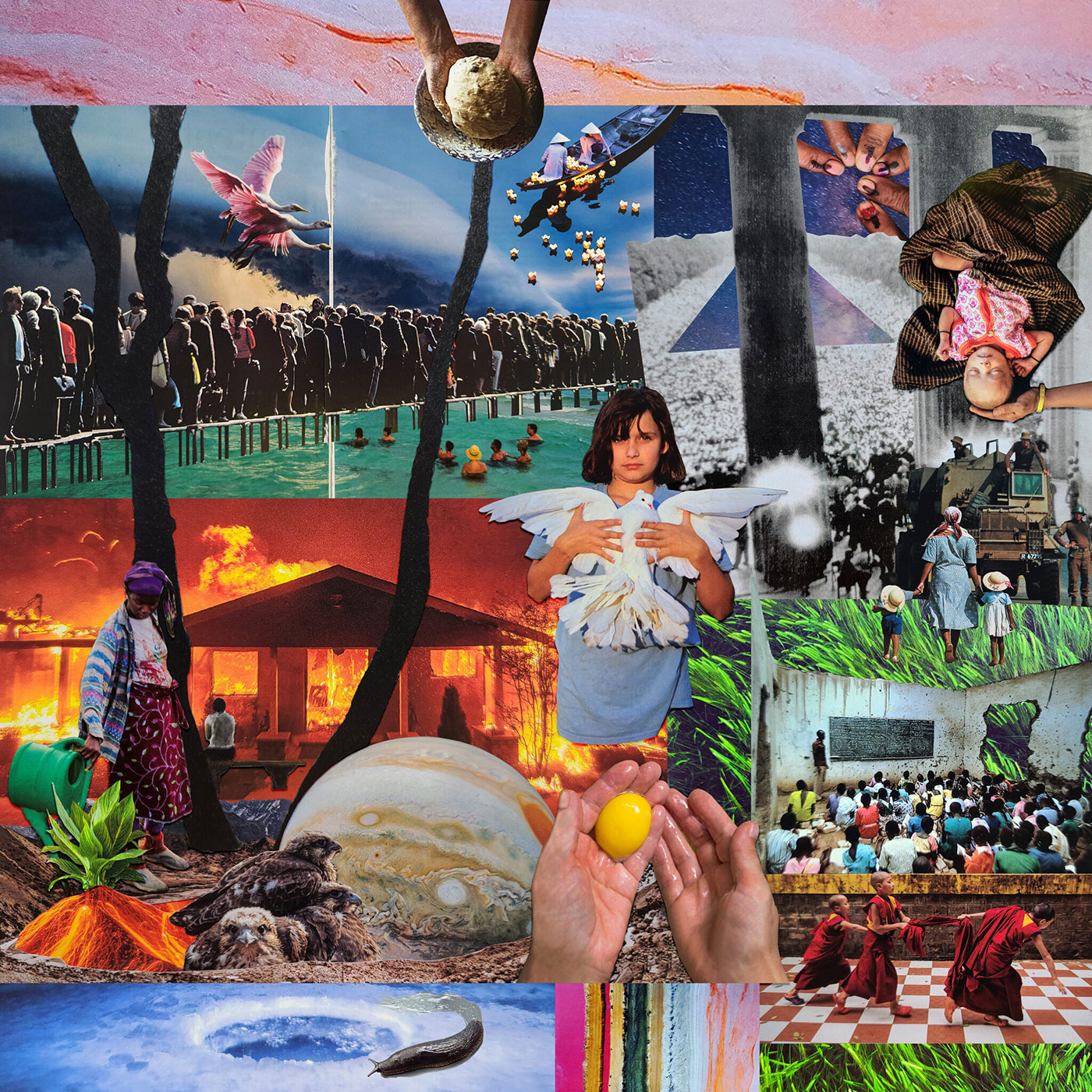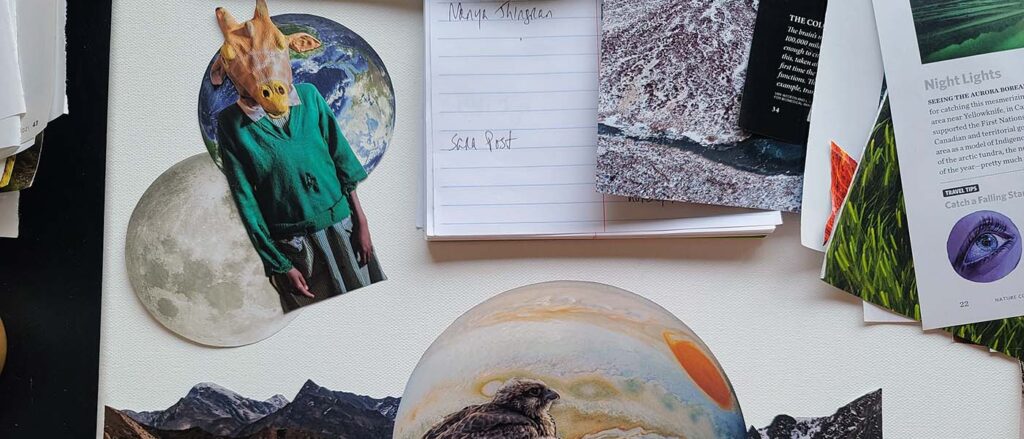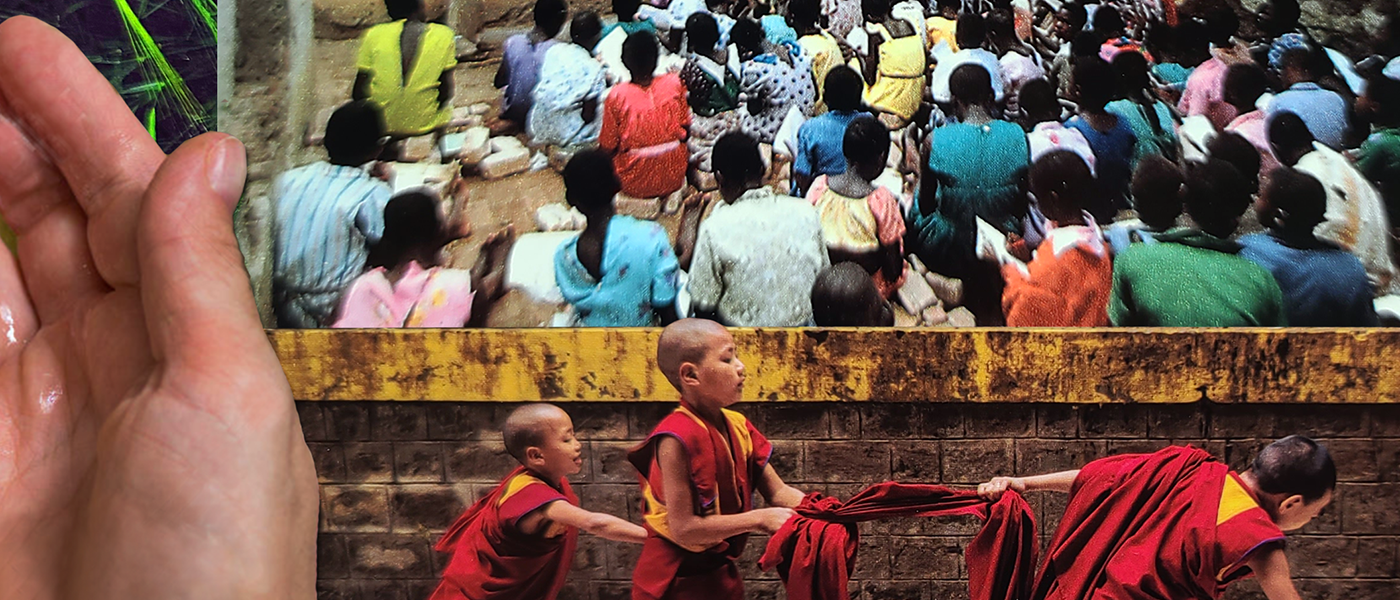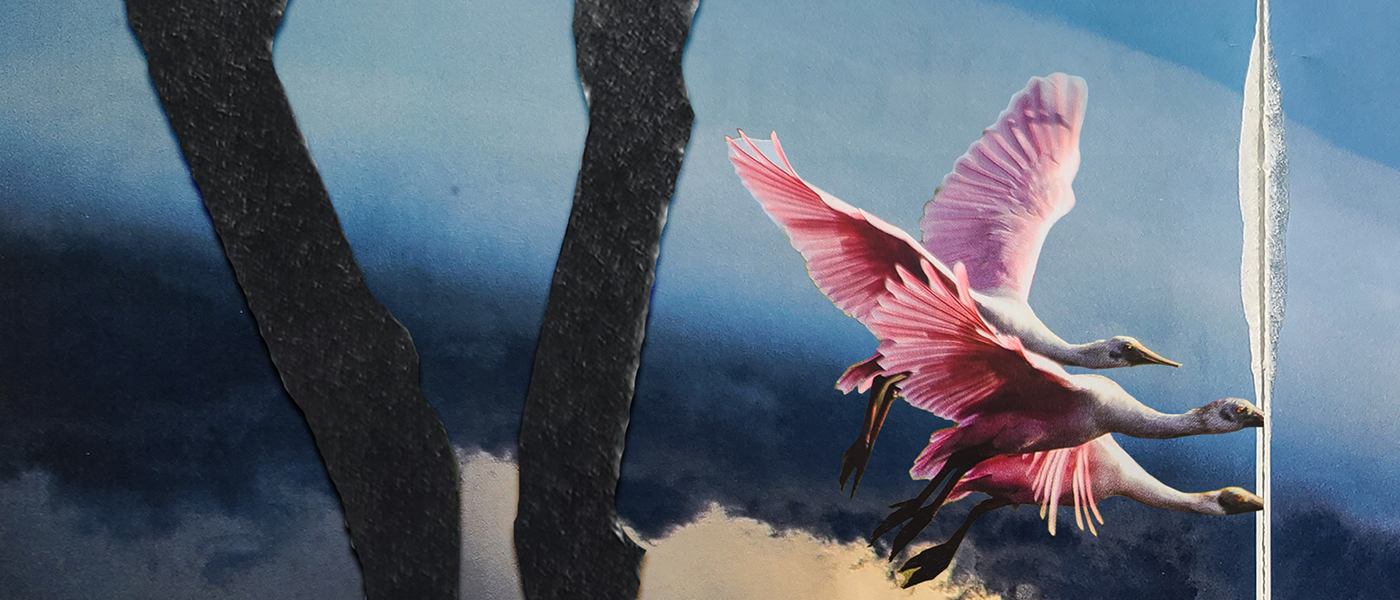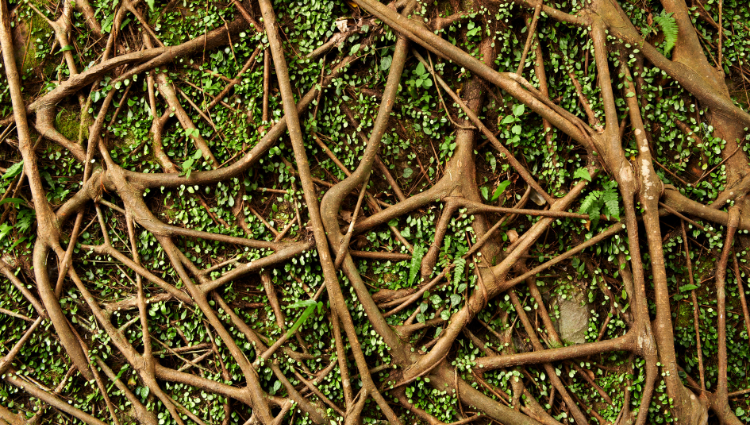TSW Art Director, Meg Sykes, on creating the featured image for Issue 13: Rebellious Joy
When I began working on the art for Issue 13: Rebellious Joy, I never imagined that the process would end up being a catalyst for processing grief. Yet the night before it was due, I found myself emotionally exhausted, surrounded by dissected National Geographics, sobbing over a blank canvas and a musty 1982 AT&T advertisement with the message: “Call Dad and get a second wind.” My dad had died just two months prior.
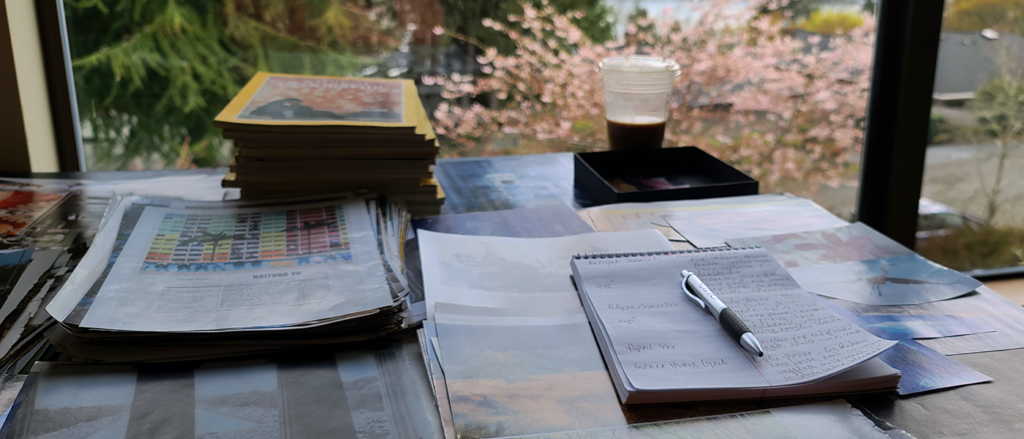
Under normal circumstances, creating featured artwork for an issue involves immersing myself in each writer’s work, attempting to distill the essence of their writing into an image that is both complementary and visually compelling. It’s an intense, affecting, extremely rewarding process. I started the research phase for developing Issue 13’s art about a week after my dad’s death, and I was in a strange head space — both desiring the distraction that art and literature could provide and knowing that I was something of a ticking time bomb of emotions. I went ahead with the same preliminary process I used for Issue 12, my inaugural publication as Art Director for The Seventh Wave; first doing a read-through of the publication as a whole and making notes on any overarching themes or feelings I took away from it, then going back through for closer reads of each piece while noting key phrases and visuals that stuck with me. Usually at this stage I would begin creating each individual art piece, but this time — given we’d decided to do a single, simultaneous rollout of the entire publication rather than many consecutive weeks of distinct releases — I wanted to pursue a more holistic concept.
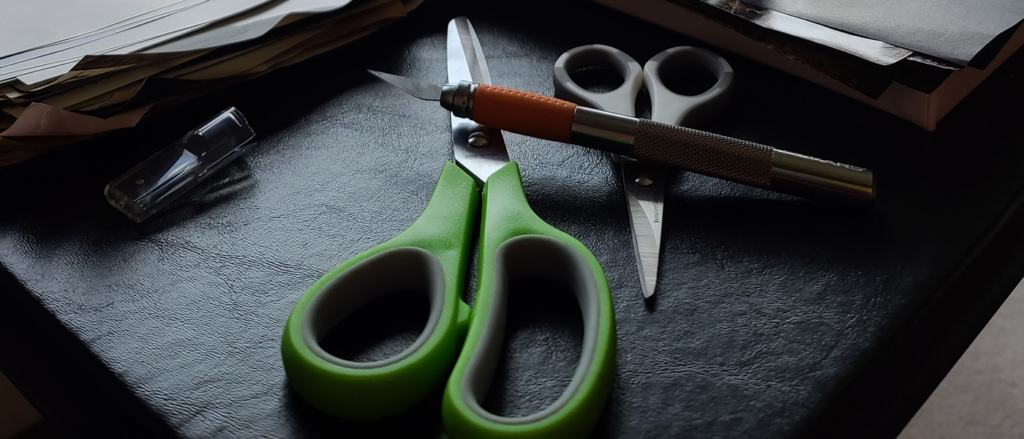
Instead of returning to the tailor-made double exposures I’d constructed for each piece in Issue 12: Before/After, for Rebellious Joy, I felt inspired to attempt a single, physical, paper-and-glue collage for the cover art, from which the smaller pieces would be extracted as overlapping photographs. Rather than seek out perfect images to match up with each written piece, I wanted found imagery to dictate the narrative of the collage, while allowing the visual and thematic elements from the poetry and prose to come through organically — simply by nature of immersing myself in the writing as I was developing the art. It was also important to me that the story behind each image have significance, even though the viewer wouldn’t necessarily have that information. As the curator of this visual world, I needed to know that each picture represented rebellious joy in some unique form.
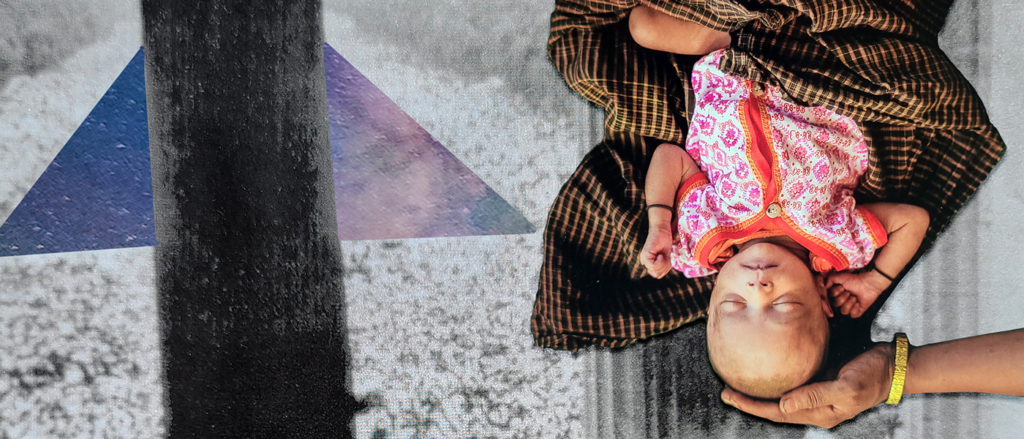
And indeed, the collage is filled with incredible images and stories of joy at its most defiant: an essential civil rights protest at the National Mall; a school persevering among the ruins of war; young monks in a moment of childish play; the marked fingers of women who just voted for the first time; a refugee baby born without a country; a mother and her children walking bravely in the face of a military tank; the gloriously unexpected colors and textures of nature; and pieces of many other pictures and stories woven together to create histories that are at once familiar and surreal.
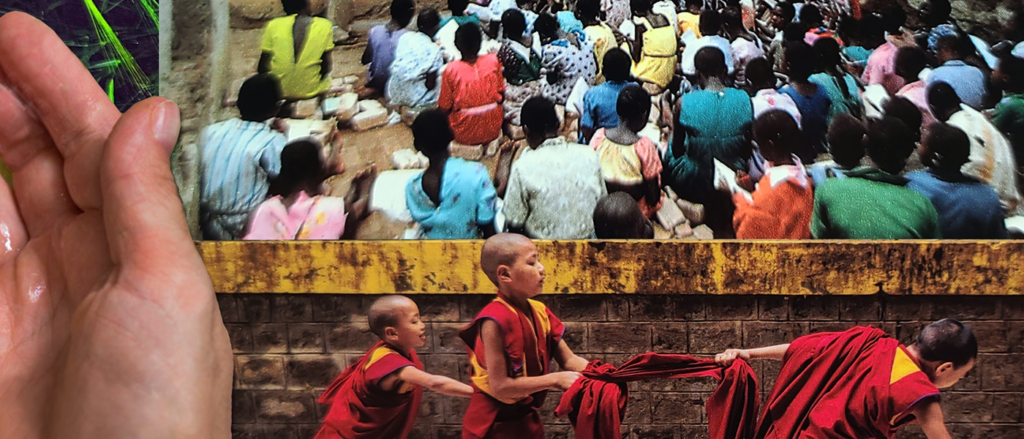
I put a call out on social media for magazine donations and received bags and bags and boxes and more bags. My initial concern was that they’d all be current, but I was pleasantly surprised to find issues of National Geographic dating as far back as the early 1980s, in addition to a small but amusing assortment of other publications ranging widely in date and subject matter. The Museologist in me struggled to slice into the pristine glossiness with my X-Acto knife, but the artist in me forged ahead. I cut hundreds of images from the magazines I received, sorting them into loose groupings of hands, animals, people, plants, textures, objects, other. I kept stopping to read about the incredible things I was seeing. So often I wanted to call my dad and tell him about some fantastic new thing I had learned.
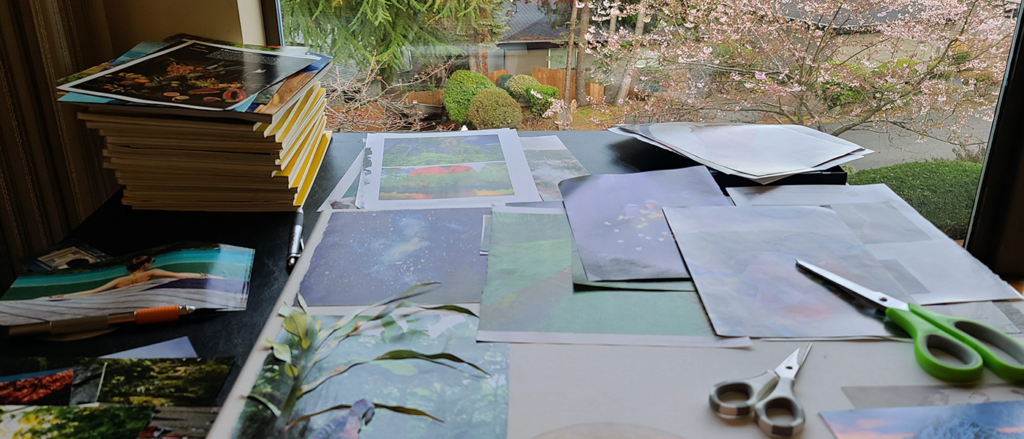
Similarly, I found myself returning to the issue pieces again and again, lured by fragments of language that had taken up residence in my consciousness: Lauren Mallett’s “gaping maw of the earth,” April Yee’s “yellow circles in a syruped sea,” Swastika Jajoo’s “body with an arm cut,” Sarah Ghazal Ali’s “wound water” — these images manifested in my mind even as I pored over dozens of magazines for fresh content for the collage; Rachel Edelman’s “chlorinated green,” Nanya Jhingran’s “invisible map lines,” Jennifer Perrine’s “ovaries left to ripen,” and Miguel Barretto Garcia’s “ghost pigeons” — all of these striking visuals continued to infuse the decisions I made about what I tore from magazines.
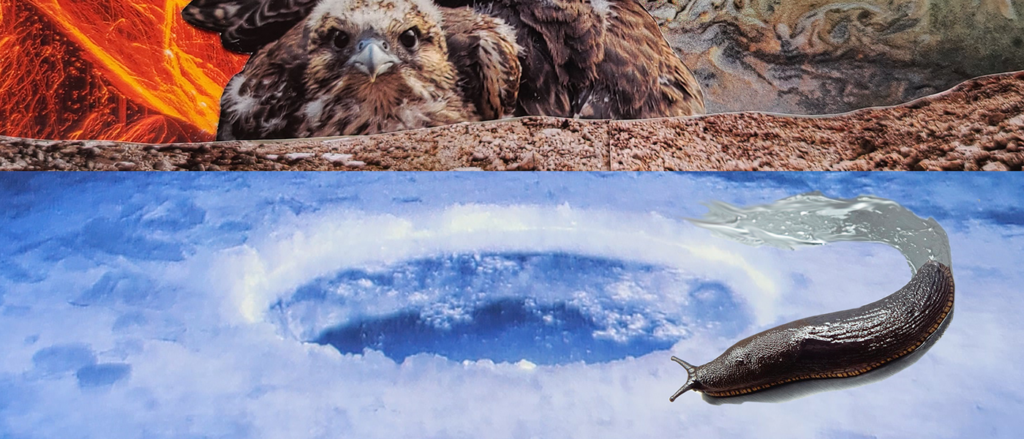
I also considered the interplay of family and food — dough, specifically — in Grace Hwang Lynch’s “Little House in the Big Pandemic” and Alysia Gonzales’ “Family House,” and was reminded of the benefits of hindsight in sheena d’s hilariously poignant reflection on adolescence and middle school: “If I Had Known Then That Casey and Rhian Were Both Terrible Pieces of Shit, Puberty Would Have Been Way More Fun.” Having just spent a month with care providers in hospitals and hospice facilities, Sara Yinling Post’s “caring” hit particularly close to home with its touching depiction of what it means to be a nurse, while Natachi Mez’s “Related to Rhythm, Three Poems” provided a lovely musical cadence and texture. And finally, I could not — I cannot — stop hearing Aaliyah Daniels’ line: “I am a carved out woman looking for a flame,” which in many ways feels emblematic of the entire theme of this issue: rebellious joy.
My dad, a poet and storyteller in his own right, would have appreciated this great tapestry of words and imagery that kept weaving and unweaving itself in my mind, like a phoenix of verse.
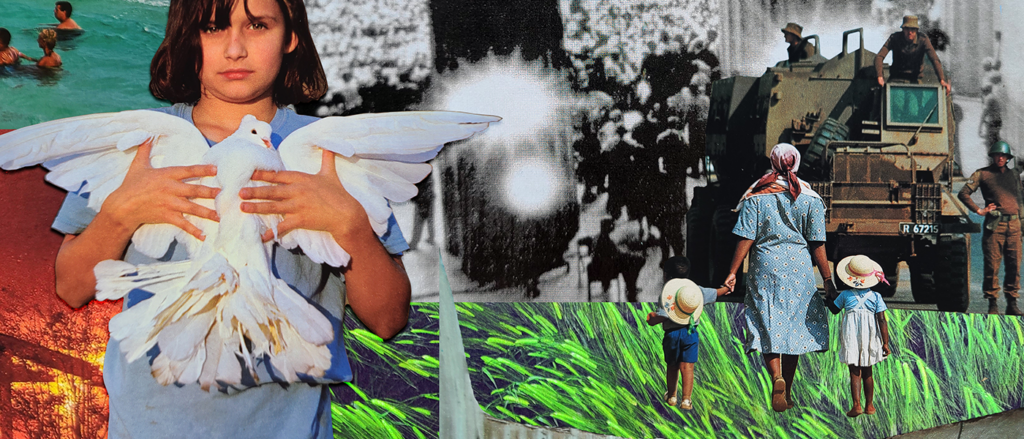
And then, quite suddenly, it was midnight the night before the cover image was due, and I was surrounded by notes and scraps of paper, paralyzed by the notion of permanence threatened by gluing anything down, and devastated by this saccharine AT&T ad that I hadn’t even saved but somehow kept showing up. I couldn’t move forward. I didn’t know what to do. I was angry at paper, at AT&T, at National Geographic, at my knife for not being sharp enough, at my cat for walking slapdash through my careful piles, at my chair for being uncomfortable, at my drink for being empty, at the room for being too dark, at my hair for falling in my face, at my dad for being dead, and mostly, mostly, I was furious at myself for thinking I could take this on when I was now, seemingly, failing.
In a moment of concern and quick thinking, my partner suggested that perhaps I might be more comfortable returning to the digital realm. And he was right. In one of those time-bending montage segments that felt like five minutes but was probably more like a few hours, I photographed those hundreds of paper shapes and pulled them into Photoshop — and from that moment, everything fell into place. It was fascinating how when I stared at the physical canvas, I somehow couldn’t see the images, but once I had them on my virtual artboard, I knew exactly where each piece needed to live.
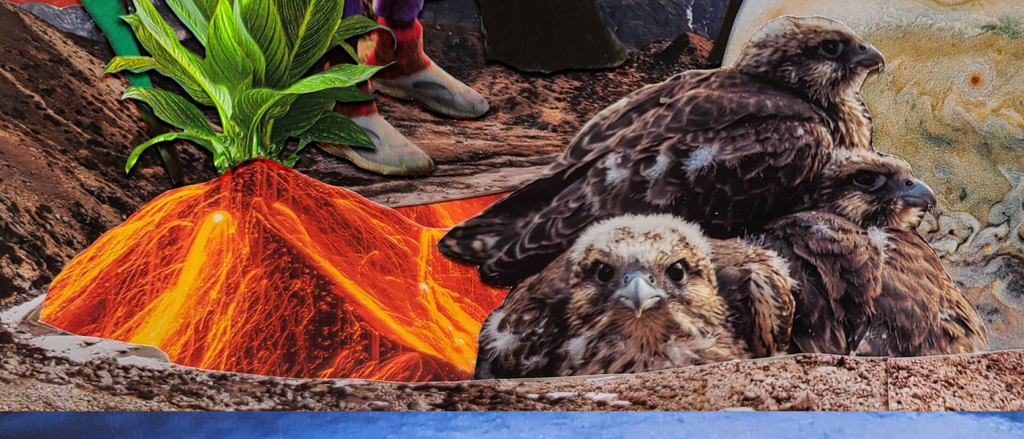
In the end, I adhered to my main project goals and the art creation process was effectively unaltered: I used only found images from physical magazines, which I manually cut out by hand, then positioned, unedited, on a canvas. But the result — or at least the byproduct — was, in some ways, an entirely different object than I set out to make. I still have every piece I cut from those magazines. I still have the canvas, sitting untouched in my living room. And I now have a digital library of hundreds of images that I can regenerate into an endless assemblage of unique art pieces.
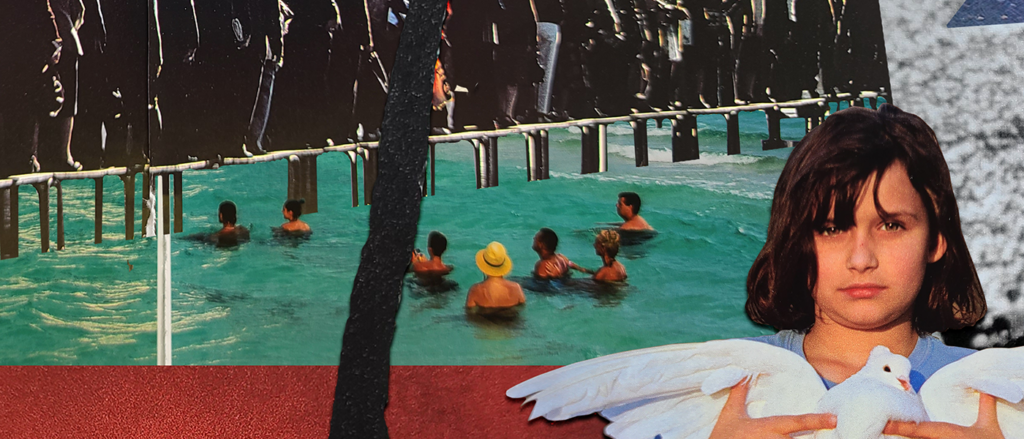
I finished the collage at 5:30 AM, a little queasy from my 41-year-old body’s newfound failure to handle all-nighters and delirious with the melodrama of a night of intense creative work. As I turned out the lights to head to bed, I realized it was Easter, and was once again wrenched into the undertow of a vast emotional swell. When my sister and I were kids, we would wake up on Easter morning at my dad’s house, race delightedly to the bathroom, and there, taped to the mirror, would be a message from E.Bunny — a riddle written in perfect rhyme. Solve that one, and it would lead us into the back yard, and then maybe down into the basement, or into the front closet, until eventually all the clues would be solved and we’d arrive at an Easter basket brimming with candy.
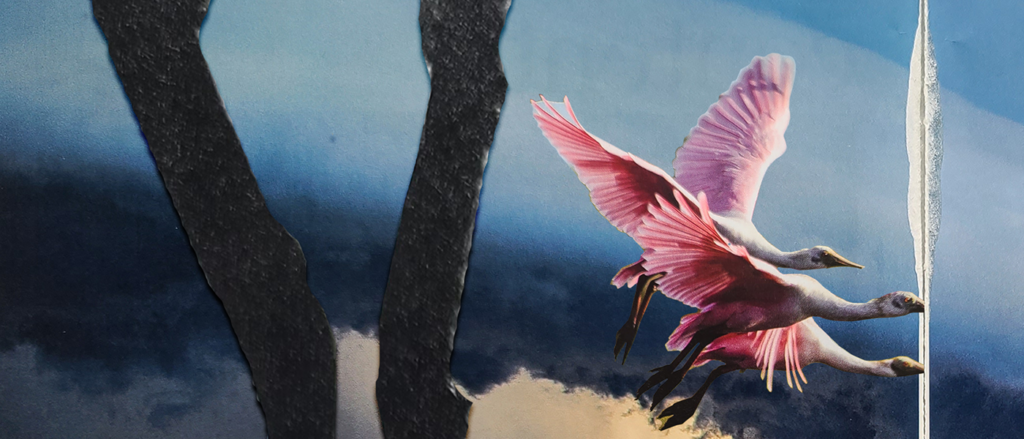
My dad was not always kind or generous to himself, but he could be a man of great benevolence and excess when it came to others. “Live it up!” he would say, at even the most seemingly insignificant of milestones or holidays — if we were traveling, adding, “you may pass this way but once!” — and my sister and I would look at each other and giggle, then bashfully order something ridiculously extravagant. During our college years, he’d take all of our friends out to dinner when he came for a visit, whether he knew them or not. As we got older, my sister and I would use the “live it up” refrain to enable each other’s vices and justify whatever expenses needed funding on dad’s “emergency” credit card (making well-meaning, mostly-hollow promises that we’d pay him back). And though he could see right through this charade, he never put a stop to it. He’d feign gruffness and give us a hard time — only thinly veiling the twinkle in his eye — then joke about it with the non-offending sister when the other was out of earshot.
Recently, the “live it up” mantra has taken on something of a more urgent tone for me. Perhaps it is the forced solitude of the pandemic, my transition into a fourth decade on this earth, or the years-on-fast-forward feeling that comes with having two young children, but embracing small joys and luxuries wherever one can find them feels like a necessity. On that Easter morning, before finally collapsing into bed, I sat down and wrote my kids a riddle — in perfect rhyme — under the pen of E.Bunny and left it for them to find on the kitchen table.
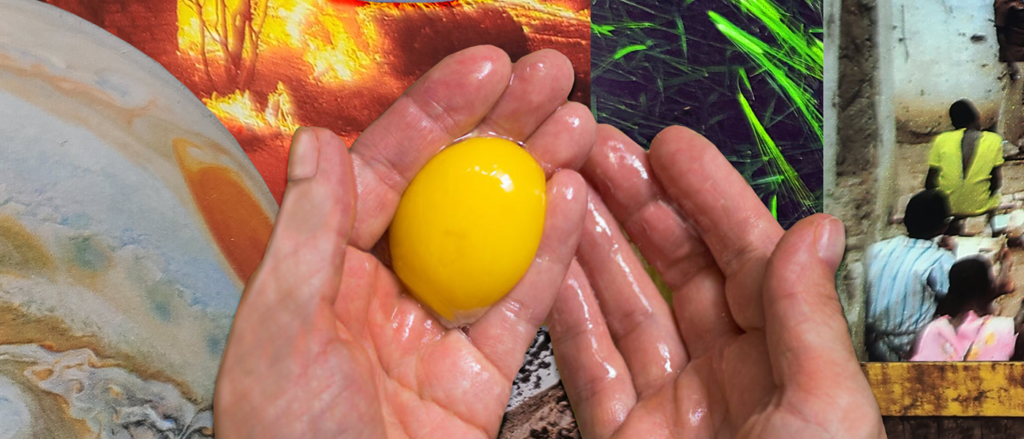
I’m not sure what it all means, but I’m pretty sure there’s a metaphor in there somewhere for rebellious joy — and perhaps that’s what my dad was getting at all along.
